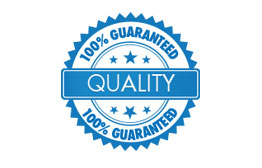Rubicon Antibody
- SPECIFICATION
- CITATIONS
- PROTOCOLS
- BACKGROUND

Application
| WB, IHC-P, IF, E |
|---|---|
| Primary Accession | Q92622 |
| Other Accession | XP_005269431, 530375960 |
| Reactivity | Human, Mouse, Rat |
| Host | Rabbit |
| Clonality | Polyclonal |
| Isotype | IgG |
| Calculated MW | Predicted: 90, 101, 109 kDa Observed: 91, 99 kDa |
| Application Notes | Rubicon body can be used for detection of Rubicon by Western blot at 1 - 2 µg/ml. Antibody can also be used for Immunohistochemistry starting at 5 µg/mL. For immunofluorescence start at 20 µg/mL. |
| Gene ID | 9711 |
|---|---|
| Target/Specificity | KIAA0226; Rubicon antibody is human, mouse and rat reactive. Multiple isoforms of Rubicon are known to exist. |
| Reconstitution & Storage | Rubicon antibody can be stored at 4℃ for three months and -20℃, stable for up to one year. |
| Precautions | Rubicon Antibody is for research use only and not for use in diagnostic or therapeutic procedures. |
| Name | RUBCN (HGNC:28991) |
|---|---|
| Synonyms | KIAA0226 |
| Function | Inhibits PIK3C3 activity; under basal conditions negatively regulates PI3K complex II (PI3KC3-C2) function in autophagy. Negatively regulates endosome maturation and degradative endocytic trafficking and impairs autophagosome maturation process. Can sequester UVRAG from association with a class C Vps complex (possibly the HOPS complex) and negatively regulates Rab7 activation (PubMed:20974968, PubMed:21062745). |
| Cellular Location | Late endosome. Lysosome. Early endosome Note=Predominantly located in late endosomes/lysosomes, only partially detected in early endosome and not at all in the Golgi apparatus |

Thousands of laboratories across the world have published research that depended on the performance of antibodies from Abcepta to advance their research. Check out links to articles that cite our products in major peer-reviewed journals, organized by research category.
info@abcepta.com, and receive a free "I Love Antibodies" mug.
Provided below are standard protocols that you may find useful for product applications.
Background
Two Beclin-1-interacting proteins, the run domain Beclin-1 interacting and cysteine-rich containing protein (Rubicon) and ATG14L, reciprocally regulate autophagy at different stages. Knockdown of Rubicon caused enhancement of autophagy while that of ATG14L caused a defect in autophagosome formation (1). Rubicon functions as part of a Beclin-1-PIK3C3-containing autophagy complex and is also an essential, positive regulator of the NAPDH oxidase complex (2). Upon microbial infection or TLR2 activation, Rubicon interacts with the CYBA subunit of the NAPDH oxidase complex, leading to a burst of reactive oxygen species and inflammatory cytokines (2).
References
Matsunaga K, Saitoh T, Tabata K, et al. Two Beclin 1-binding proteins, Atg14L and Rubicon, reciprocally regulate autophagy at different stages. Nat. Cell Biol. 2009; 11:385-96.
Yang CS, Lee JS, Rodgers M, et al. Autophagy protein Rubicon mediates phagocytic NAPDH oxidase activation in response to microbial infection of TLR stimulation. Cell Host and Microbe 2012; 11:264-76.
If you have used an Abcepta product and would like to share how it has performed, please click on the "Submit Review" button and provide the requested information. Our staff will examine and post your review and contact you if needed.
If you have any additional inquiries please email technical services at tech@abcepta.com.













 Foundational characteristics of cancer include proliferation, angiogenesis, migration, evasion of apoptosis, and cellular immortality. Find key markers for these cellular processes and antibodies to detect them.
Foundational characteristics of cancer include proliferation, angiogenesis, migration, evasion of apoptosis, and cellular immortality. Find key markers for these cellular processes and antibodies to detect them. The SUMOplot™ Analysis Program predicts and scores sumoylation sites in your protein. SUMOylation is a post-translational modification involved in various cellular processes, such as nuclear-cytosolic transport, transcriptional regulation, apoptosis, protein stability, response to stress, and progression through the cell cycle.
The SUMOplot™ Analysis Program predicts and scores sumoylation sites in your protein. SUMOylation is a post-translational modification involved in various cellular processes, such as nuclear-cytosolic transport, transcriptional regulation, apoptosis, protein stability, response to stress, and progression through the cell cycle. The Autophagy Receptor Motif Plotter predicts and scores autophagy receptor binding sites in your protein. Identifying proteins connected to this pathway is critical to understanding the role of autophagy in physiological as well as pathological processes such as development, differentiation, neurodegenerative diseases, stress, infection, and cancer.
The Autophagy Receptor Motif Plotter predicts and scores autophagy receptor binding sites in your protein. Identifying proteins connected to this pathway is critical to understanding the role of autophagy in physiological as well as pathological processes such as development, differentiation, neurodegenerative diseases, stress, infection, and cancer.




